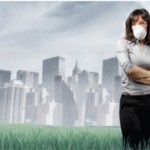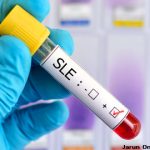Fire smoke PM2.5 was not associated with overall RA risk, but was significantly associated with RA-ILD. Post hoc analyses showed that fire smoke PM2.5 concentrations of 0.28 μg/m3 and higher seemed to drive this elevated risk.
Higher levels of NOx were associated with an increased risk for incident RA at the highest exposure quartiles, versus the lowest ones. Ozone and PM10 levels were associated with an elevated risk for incident RA without specific antibodies like rheumatoid factor or anti-cyclic citrullinated peptide antibodies, the paper says.
Timing of pollutant exposure may be important. The researchers found that fire smoke PM2.5 exposure was most associated with RA in the one to three and three to five years prior to RA diagnosis. NOx showed the strongest point estimates in the three to five years and five years before RA onset. PM10 exposure was most strongly associated with RA in the three to five years before RA onset.
ZIP codes—known to be a source of misclassification—is a study limitation, notes Dr. Kronzer. “I think if we truly had correct pollutant exposure data for each patient, the associations would be stronger,” she adds. Other limitations include selection bias due to missing data in controls and individuals from rural areas, over-representation of male sex and smoking history in the VA population, and sparse pollution monitoring in rural areas.
Growing Awareness of Environmental Factors in RA
A recent review paper points to growing evidence that autoimmune disease results from multiple exposures that alter susceptible genomes over time. Those exposures include a variety of pollutants, xenobiotics, infections, occupational exposures, medications, smoking, psychosocial stressors, changes in diet, obesity, exercise and sleep patterns, as well as wildfire and other climate change effects.2
Dr. Kronzer’s study adds to a growing body of research linking pollution specifically to poorer rheumatology outcomes. She points to other studies that suggest pollution plays a role in RA. For example, a Swedish study suggests RA incidence increases as NO2 from local traffic and SO2 from home heating sources increase, with stronger associations for patients who are negative for anti-citrullinated protein antibody.3
Korean researchers have found associations between high PM10 exposure and mortality in RA-ILD patients.4
Researchers in Sweden and Korea had access to their nations’ detailed pollution monitoring systems, Dr. Kronzer says.
Dr. Kronzer is part of the Rheumatology Engaged in Action for Environmental Health initiative, which raises awareness of environmental changes’ potential impact on rheumatic diseases and suggests practical, cost‐effective and sustainable solutions. In addition to wildfires, the initiative focuses on extreme weather events, heat waves, extreme cold, ultraviolet light, pathogens, sea level rise, food insecurity and environmental toxins.


